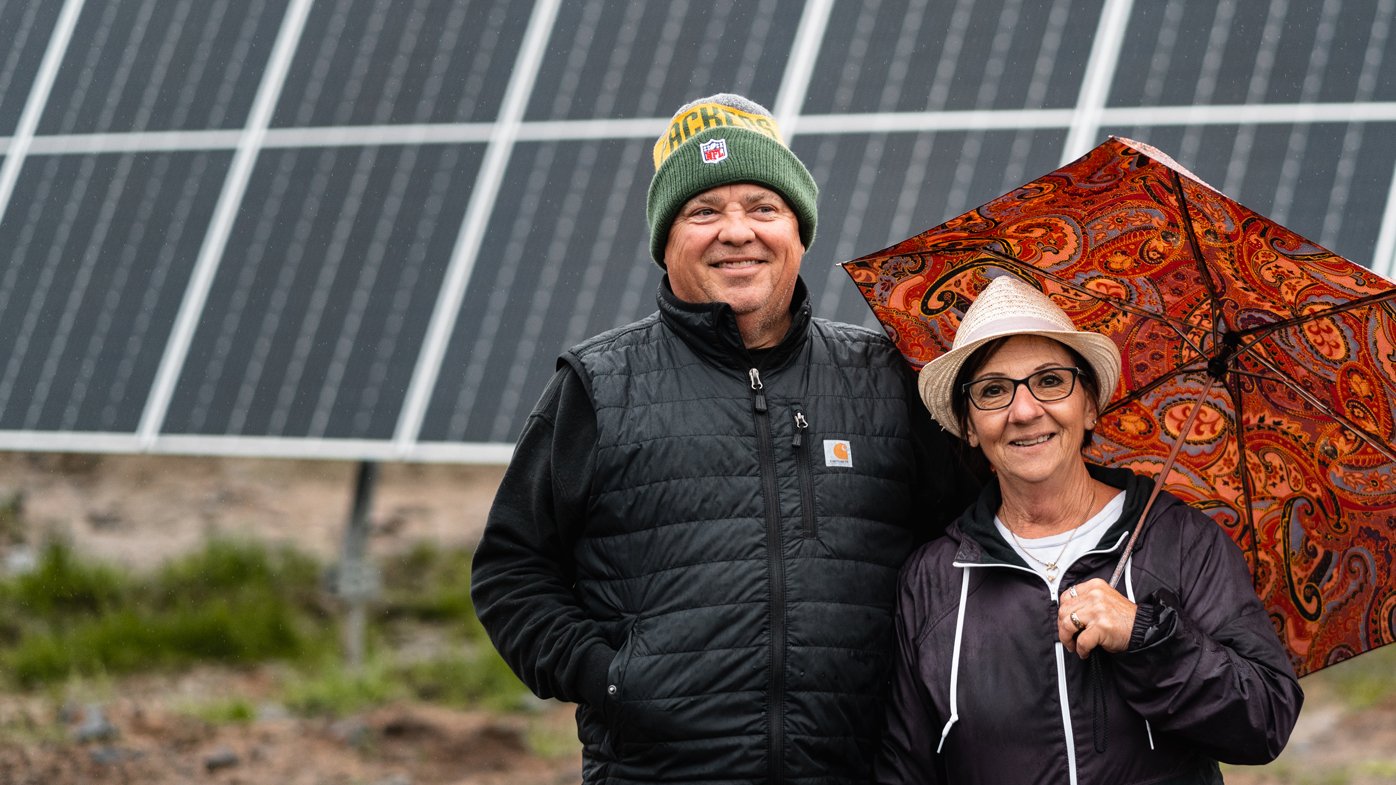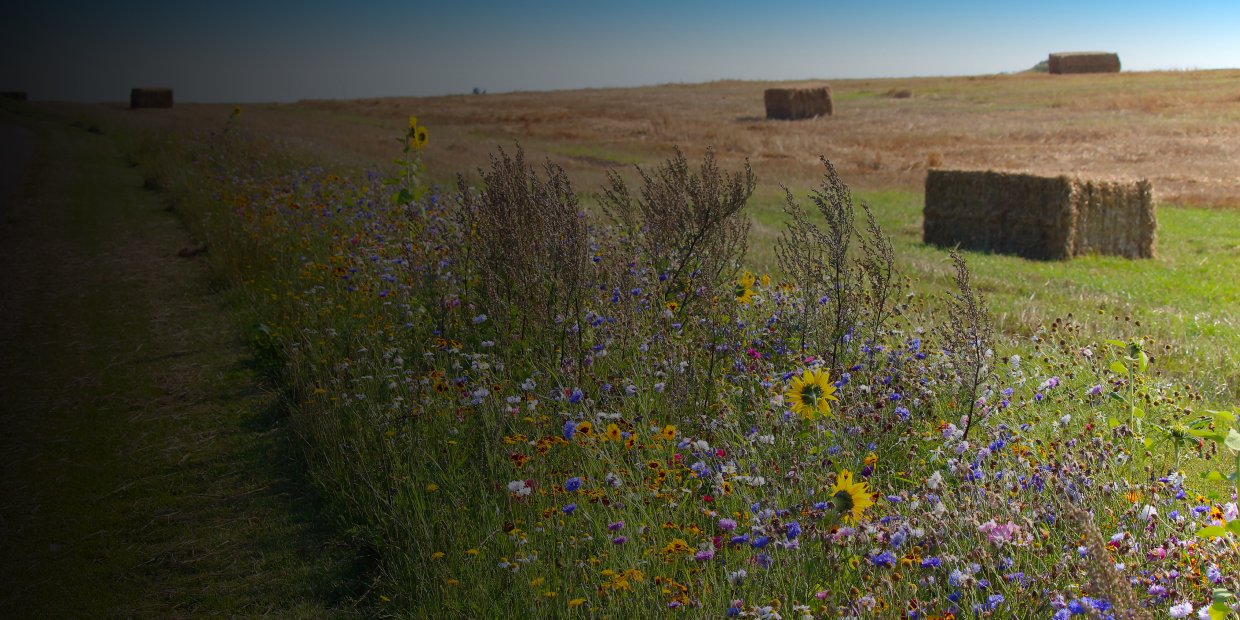
Host a Lightstar Community Solar Project
Host a community solar project with Lightstar for a long-term, stable source of income that can help mitigate annual crop risks and ensure that the land will continue to generate income even after retirement.
Benefits
Reliable, long-term income
Leasing your land for a community solar project results in annual lease payments for between 15 and 30 years. This is passive income that allows farmers and landowners to diversify sources of income, hedge against crop risks, or invest in other interests.
Often the income received from solar leases is more lucrative than other typical agriculture or farm leasing options.
Increase productivity of land
Lightstar projects are built to make the land more productive, not only through solar energy generation, but also for farming and the local ecology. We create pollinator habitats and design for dual-use, which allows for crops and livestock grazing in and around the array.
Provide clean energy to your community
Community solar projects provide clean, less expensive energy to local residents, businesses, and public entities. By hosting a solar project, landowners are helping to transition the electricity grid to more clean energy sources, and a more sustainable future.

Land Stewardship
We design solar projects that maximize energy production while preserving agricultural or ecological activity in and around the array. We want landowners to harvest more than just solar.
Whether it is active or fallow farmland, consideration for the surrounding ecology is at the heart of how we design and construct our projects.
We plant pollinator mixes, native shrubs and deep-root grass mixes to promote carbon sequestration and robust food production for the local area.
We also design dual-use systems that allow for rotational grazing and crop growth, which can increase carbon sequestration and improve soil health.

Creating Legacy
Our landowner-centric approach takes into account the financial pressures they may face and their concerns around the longevity and health of their land. We offer solar land leases as a method for landowners to meet financial or environmental goals they have for their land, legacy, and community.
Each Lightstar solar project leaves a clean energy footprint in the community, and in our eyes, makes each neighbor a clean energy pioneer. Together, we’re contributing to cleaner air and water for our children.
We come to you
Unlike other solar companies, we go beyond just developing projects. We also build, own, and operate them, making us a one-stop-shop for our landowner partners. This means that they can rely on us to take care of all aspects of the solar project, from start to finish.
Our goal is not only to create successful and sustainable solar installations but also to establish long-term partnerships with our landowners. We understand that their land is more than just a space for solar panels, it is their livelihood. That's why we work closely with them to ensure that the solar project benefits both parties.
We make it simple
We strive to make the leasing process straightforward and easy with minimal time investment from our landowner partners. Once the project is built, we monitor 24/7 and perform regular maintenance checks.
Collaboration
When we come out and do a full site assessment, we’ll want to discuss your needs, expectations and preferences for the project.
No cost to landowners
From the first step of the process all the way to removing the solar project, there is no investment required from the landowner.
Decades of income
Depending on the state, community solar projects operate for between 15 and 30 years. Our lease payments are quarterly and escalate annually for the life of the project.
Come to you
After determining that your site
meets our basic requirements, we will come out and meet with you face to face.
Better than we found it
Our approach to solar project design isn’t all about maximizing power generation. We want to make the land more productive, ecologically, as well as accommodate for agriculture use.
Recent Quotes
“Our solar farm project with Lightstar is exciting because it has brought us financial stability and a sense of environmental responsibility. The solar installation has become a point of interest for our neighbors and friends, and we have been able to connect and talk to them about the benefits of leasing our land for renewable energy. Overall, the process has been straightforward, and we would highly recommend it to other landowners who are considering this opportunity. We hope that our testimonial encourages others to join in on this initiative and learn more about the benefits of solar farming.”
— Gary Johnson
Meet Chris Osaka, owner of the Osaka Farm at Cream St.
Dual Use: Solar + Crops
Lease your land for solar while continuing to farm with Lightstar - we are leading the industry in agrivoltaics!
Hosting a community solar project with Lightstar doesn’t mean you need to retire your land from farming. We can design and build projects to accommodate livestock grazing with higher, stronger racking or to allow for cultivating crops with wider spacing between the rows of solar panels. Our team also understands that considerations around farming needs, such as crop rotation and regenerative agriculture, may need to be built into the solar project’s design.
This arrangement enables landowners to not only reap more income from their land, but to also continue to support farming, either by them and their family or by other farmers in their community.
Stewards of Your Land
We understand that welcoming a Lightstar community solar project to your land may come with concerns. We have deep respect for the land we build solar on and the people who decide to partner with us. In many ways, we look at building solar as also partnering with the land – doing what we can to enrich its soil, improve productivity, support ecology, and generally leave it as good or better than before we arrived.
We plant pollinator mixes, native shrubs, and deep-root grass mixes to promote carbon sequestration and robust food production for the local area. Our projects can be homes for bees, birds, and wildlife. We don’t have to sacrifice these vital ecological resources for clean energy – they can coexist.
Interested in leasing or selling your land?
FAQ
Appearance
-
Lightstar will consult with you throughout the development stage to ensure that the visual impact of the solar farm will be minimal. We specialize in incorporating natural screening such as trees and native plants to help mitigate any unwanted visual impacts. Solar farms are low-profile structures and typically do not pose a significant hindrance to visual sightlines.
-
It is a ground-mounted framing system that is usually pile driven or ballasted depending on the soil. The framing system holds the solar modules in a series of lengths that are south or south east facing. Typically, the modules sit approximately 6 to 8 feet off the ground. Usually sited on an area of the parcel that can preserve or be integrated into the natural beauty of the area.
-
No. The solar farm’s inverters will produce a very low decibel sound while operating during the day, however it will not be a noticeable disturbance. At night, the solar farm will not be producing power and thus does not produce any sound.
Development Process
-
There is no cost burden for the landowner. Lightstar’s experienced team will be responsible for the entire development and construction process and all associated costs.
-
Generally, for a 5 megawatt solar farm the development process, from permitting to operation, takes 12 months. However, the development timeline can vary depending on the utility company’s interconnection process and the local/municipal permitting and approval processes. In addition, seasonal considerations can impact the construction timeline, adding between 3 and 5 months, however Lightstar works to mitigate these extensions where possible.
Payment
-
Lease rates are determined by many factors, such as the specific characteristics of the land. Solar hosts can expect a payment above the current rentable value of the land. Contact Lightstar to discuss your specific site and we can provide a preliminary lease amount estimate.
-
Lease payments will be made quarterly and are fixed (with an annual escalator) for the life of the project. Regardless of system performance, the lease payments will occur as laid out in the agreement.
Term
-
Typically, we will lease the land for 20 years, with the option to extend. The length of the lease term depends on the specific market or program.
-
Yes. Landowners are free to use the portion of their land not sited with solar however they would like. For projects designed to accommodate dual-use, landowners are able to continue to farm the land in and around the solar array. To learn more about dual-use, please contact us.
-
Lightstar will be responsible for removal of all equipment and infrastructure associated with the project. Lightstar will pay all costs associated with the decommissioning activity.




